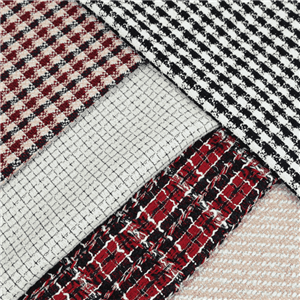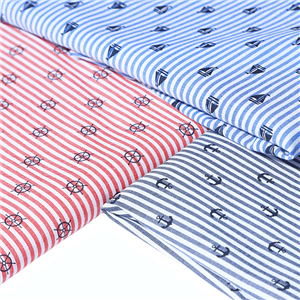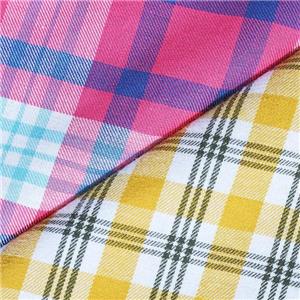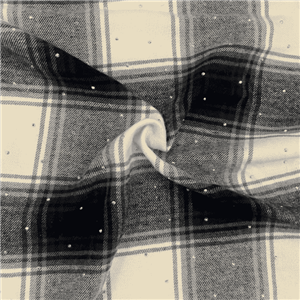What Are the Benefits of Seersucker Fabric?
Understanding Seersucker Fabric
Seersucker fabric is not simply a visual effect; it’s the result of precise weaving technology. Alternating tight and slack warp yarns create natural puckers, giving the fabric a permanently crinkled surface without any chemical treatment. This weaving structure traps air pockets, reducing fabric-to-skin contact and improving thermal comfort.
| Property | Seersucker Fabric | Regular Cotton Fabric | Polyester Fabric |
|---|---|---|---|
| Surface Texture | Puckered / Crinkled | Smooth | Smooth |
| Breathability | Excellent | Good | Moderate |
| Wrinkle Resistance | Natural | Low | High |
| Ironing Requirement | None | Often required | Minimal |
| Comfort in Hot Weather | Outstanding | Average | Poor |
The mechanical puckering effect of seersucker is stable and durable, especially in 100 cotton seersucker fabric, which maintains its wrinkled pattern after repeated washing. This makes it a long-term favorite among global textile buyers, particularly in warm-weather product lines.
Key Benefits of Seersucker Fabric
1. Breathable and Cool to Wear
The puckered structure forms countless microscopic air channels between the skin and fabric surface. This unique geometry enhances ventilation and moisture evaporation, keeping the body cool. Compared with flat cotton poplin, laboratory airflow tests show that seersucker fabric has 25–30% higher air permeability and 15% faster drying speed.
For garment manufacturers, this property means fewer layers, reduced lining needs, and improved wearer comfort—essential for spring and summer collections.
2. Wrinkle-Free and Low Maintenance
A major advantage of seersucker fabric lies in its built-in wrinkle resistance. Its uneven texture naturally conceals creases, which means finished garments or home textile products require no post-washing ironing.
For apparel factories and brand clients, this translates into:
Reduced production costs: No need for extra finishing processes.
Improved time efficiency: Shorter lead time from sewing to packaging.
End-user satisfaction: “Easy-care” labels attract more retail buyers.
This property also benefits travel apparel, uniforms, and hotel bedding—segments where presentation and durability are key.
3. Lightweight and Comfortable
Compared with twill or oxford fabrics of the same GSM, seersucker fabric feels noticeably lighter. The combination of slack-tension weaving and fine cotton yarns results in low fabric density and excellent drape.
Typical weight comparison for apparel use:
| Fabric Type | GSM (Average) | Hand Feel | Breathability Level |
|---|---|---|---|
| Seersucker Fabric | 110–130 | Soft, airy | ★★★★★ |
| Poplin | 130–150 | Smooth | ★★★★☆ |
| Twill | 160–180 | Firm | ★★★☆☆ |
Because of its softness, 100 cotton seersucker fabric is widely used in high-end pajamas, babywear, and light home textiles. Its natural elasticity from the puckered effect also offers enhanced comfort without spandex.
4. Travel-Friendly and Easy Packing
When compared with other woven materials, seersucker fabric is notably resistant to deformation. After being folded or compressed in luggage, it retains its textured appearance. For brands producing resort wear, sleepwear, or uniform programs, this property simplifies storage and logistics.
Garment testing under 10 kg compression for 72 hours shows that seersucker fabric maintains 90% of its original texture, whereas flat cotton loses 40–50% visual integrity. This “self-recovering” texture helps reduce product return rates for wrinkled appearance issues.
5. Stylish and Versatile Appearance
Aesthetics are an equally strong factor. Seersucker comes in a variety of patterns and colors:
White seersucker fabric – timeless, often used for luxury shirts and bedding.
Green seersucker fabric – fresh and natural, ideal for resort and leisure wear.
Checked seersucker fabric – casual yet structured, perfect for dresses or curtains.
This versatility allows designers to explore new product categories without altering base material properties. Seersucker’s surface texture adds depth and tactility, creating premium visual differentiation in a crowded apparel market.
At Honry Fabric’s Seersucker Product Page, buyers can find diverse colorways and pattern variations tailored for different collections.
6. Sustainable and Energy-Saving
As sustainability becomes central to textile sourcing, seersucker fabric offers tangible advantages:
Material composition: Primarily made from cotton, often organic or OEKO-TEX certified.
Production process: The crinkled effect is mechanical, not chemical—no resin or post-finishing required.
Usage stage: Its cooling comfort helps reduce dependency on air-conditioning, indirectly lowering energy consumption.
According to internal production data from Honry Fabric’s Factory, seersucker requires 10–15% less finishing energy compared with chemically-treated wrinkle-resistant fabrics. This makes it both an eco-efficient and cost-effective option for global apparel brands focusing on ESG compliance.
Technical Comparison: Seersucker vs. Other Fabrics
| Criteria | Seersucker Fabric | Cotton Poplin | Linen | Polyester Blend |
|---|---|---|---|---|
| Cooling Performance | ★★★★★ | ★★★★☆ | ★★★★☆ | ★★★☆☆ |
| Wrinkle Resistance | ★★★★☆ | ★★☆☆☆ | ★☆☆☆☆ | ★★★★☆ |
| Weight | Light | Medium | Light | Medium |
| Sustainability | High | High | Moderate | Low |
| Maintenance | Easy | Requires Ironing | Moderate | Easy |
| Ideal Applications | Shirts, Dresses, Bedding | Shirts | Summer Suits | Uniforms, Casualwear |
The table highlights how seersucker fabric achieves an optimal balance between comfort, appearance, and maintenance, outperforming other summer materials in total performance.
Global Market and Trend Insights
In recent years, the seersucker fabric market has experienced renewed interest driven by sustainability and comfort trends. According to Textile Exchange data, the global demand for natural cotton-based lightweight woven fabrics has grown by 18% year-on-year since 2021, particularly in categories such as:
Breathable summer shirts for men and women
Lightweight home textiles and bedding
Functional loungewear and resort fashion
Designers are also experimenting with green seersucker fabric and recycled yarns to combine eco-consciousness with color vibrancy. At the same time, digital printing on checked seersucker fabric enables small-batch customization for emerging brands.
As brands pivot toward slow fashion and long-lasting materials, seersucker stands out for its timeless style and reduced lifecycle cost.
Disadvantages of Seersucker Fabric
While the advantages dominate, seersucker requires mindful care to maintain performance:
Temperature sensitivity: Hot water or high-heat drying can damage the puckered structure.
Friction wear: Extended abrasion may gradually flatten bubbles.
Limited stretch: Natural cotton seersucker lacks elasticity compared with spandex blends.
However, high-quality 100 cotton seersucker fabric from experienced suppliers like Honry Fabric minimizes these issues through advanced weaving tension control and precise finishing.
FAQs
Q1. Is seersucker fabric 100% cotton?
Most seersucker fabric is woven from cotton, but blends with polyester or spandex exist. For premium apparel and bedding, 100 cotton seersucker fabric provides the best breathability and comfort.
Q2. How do I wash seersucker garments?
Use cold or lukewarm water under 30°C, avoid bleach, and tumble-dry on low. Do not iron, as the natural puckering replaces the need for pressing.
Q3. Is seersucker suitable for industrial applications?
Yes. Its dimensional stability and low maintenance make it ideal for uniforms, workwear, and hospitality textiles.
Q4. Can I customize color and pattern?
Suppliers like Honry Fabric offer full customization—from white seersucker fabric and green seersucker fabric to bespoke patterns such as checked seersucker fabric—meeting OEM and ODM requirements.
Q5. How does seersucker compare to linen?
Seersucker offers similar breathability but superior wrinkle resistance and easier care, making it a preferred alternative for brands seeking low-maintenance summer fabrics.
Conclusion
In summary, seersucker fabric perfectly balances comfort, aesthetics, and sustainability. Its breathable, lightweight structure ensures wearer comfort; its natural texture eliminates ironing; and its eco-efficient production aligns with modern supply chain priorities. Whether sourcing white seersucker fabric for formal shirts, green seersucker fabric for resort collections, or checked seersucker fabric for interior design, it remains a versatile choice for global brands.
As a professional cotton seersucker fabric manufacturer, Honry Fabric offers a full range of woven seersucker fabrics tailored for apparel and home textile applications. With over 30 years of production expertise, advanced weaving facilities, and strict quality control, we support clients from design development to bulk delivery.
Explore more product collections on our Seersucker Fabric page, discover practical applications in our Case Library, or learn about our advanced production capabilities at our Factory Page.
Contact Honry Fabric today to start your next textile project—where innovative weaving meets dependable quality.




